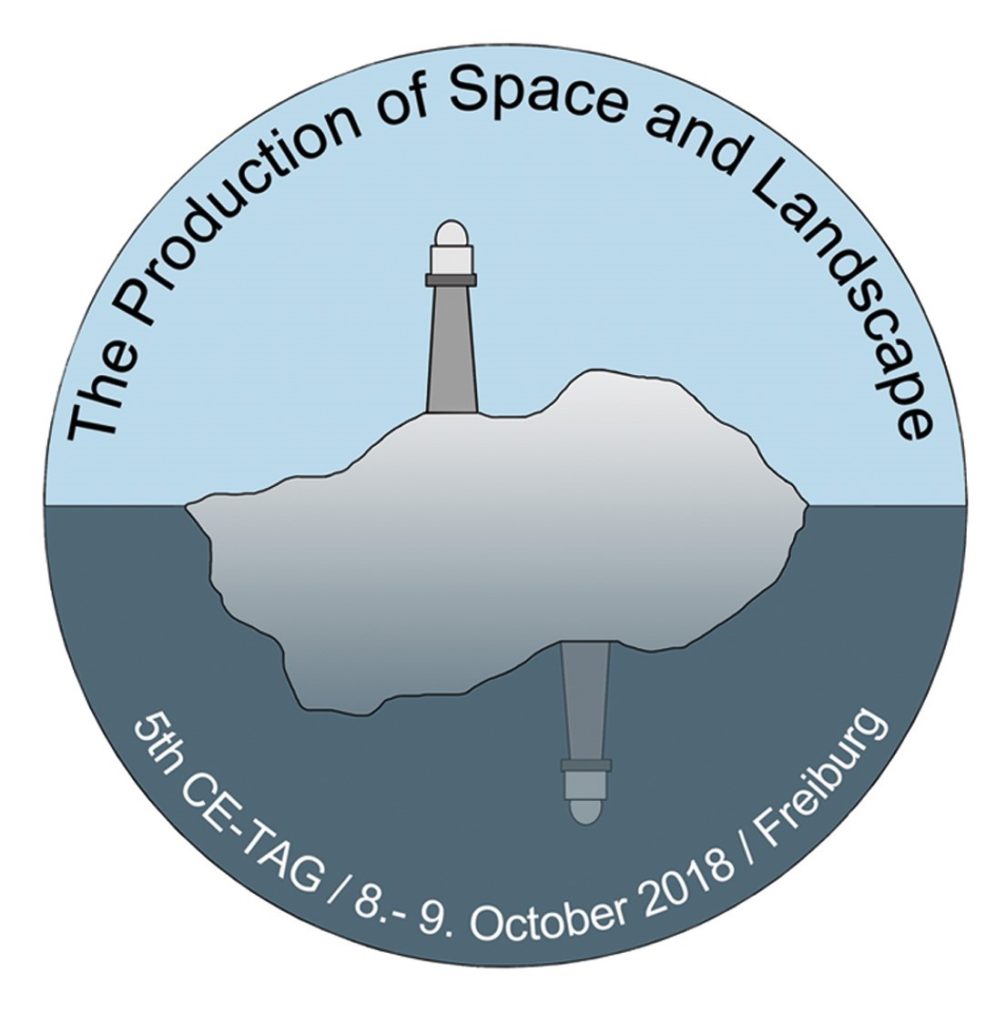Vom 8. bis 9. Oktober 2018 findet an der  Albert-Ludwigs-Universität Freiburg die 5. Konferenz der ‚Central European Theoretical Archaeology Group‘ zum Thema ‚The Production of Space and Landscape‚ statt.
Albert-Ludwigs-Universität Freiburg die 5. Konferenz der ‚Central European Theoretical Archaeology Group‘ zum Thema ‚The Production of Space and Landscape‚ statt.
Conference venue: Haus zur Lieben Hand, Löwenstraße 16, 79098 Freiburg, Germany
Organizing committee: Michael Kempf and Margaux Depaermentier, Archaeological
Institute, Dep. Early Medieval and Medieval Archaeology, University of Freiburg.
Registration fee: €20 (payable upon arrival at the conference venue)
Conference language: The official language of the conference is English.
Programme (auch als downloadbares pdf sowie mit abstracts):
Monday, 8th October 2018
10:15 Registration
10:45 Conference Opening
11:00 Keynote Lecture: Moving in space and time – Thomas Meier
12:00 Lunch Break
1. Concepts and Cognition
13:30 Spaces and Places. A Foucaultian inspired theoretical commentary – Martin Renger, Stephanie Merten
13:50 Landscape, spacing and the modern megalithic thinking – Karolína Pauknerová
14:10 Is it Greek? Reconsidering social space in Ai Khanum – Artur Ribeiro, Milinda Hoo
14:30 Virgil and the production of ‚mixed‘ landscape: surroundings of
Taranto in Georgics (4.125-140) – Francesca Boldrer
14:50 Coffee Break
15:10 „Was Gott durch einen Berg getrennt hat“ … Boundaries as practice
and phenomenon of attribution – Alexander Gramsch
15:30 Physical versus cognitive maps in modeling hunter-gatherers spatial
behavior: The case of Late Paleolithic groups in the eastern part of
the North European Plain – Aleksandr Diachenko, Iwona Sobkowiak-Tabaka
15:50 Landscape Marking in the Ulúa Iconographic Tradition – Kathryn M. Hudson, John S. Henderson
16:10 Mapping the Invisible Landscape – Miguel Costa
16:30 General Discussion
17:00 Wine reception and Apéro dînatoire – Venue: Archaeological Institute, Dep. Prehistoric Archaeology, Early Medieval and Medieval Archaeology, Belfortstrasse 22, 79098 Freiburg – Inner Courtyard.
Tuesday, 9th October 2018
2. Tools and Application
9:00 “Invisible scenarios, creating space in buried context. Experiences,
limits and perspectives” – Fabiana Battistin
9:20 Modelling Mesopotamia – The production of emerging power
relations in an irrigated landscape – Maurits W. Ertsen
9:40 Testing methods for identifying boundaries in archaeology – Irmela Herzog
10:00 Errands for erratics: modelling and explaining megalithic spacing on
glacial moraines – Eva Rosenstock, Marcus Groß
10:20 Coffee Break
10:40 Diffusing archaeological space – Matthias Kucera
11:00 “The use of Space Syntax for studying buried cities: the case of the
Roman town of Falerii Novi (IT)”
Fabiana Battistin
11:20 Urban kinaesthetics – movement in constructed space – Monika Baumanova
11:40 On the orientation patterns of the Central European Neolithic circular
enclosures according to geographical regions – Judit P. Barna, Emília Pásztor, Jaromír Kovárník, István Eke
12:00 Lunch Break
13:30 On the Significance of Landscape in Minoan Archaeology – Sebastian Adlung
13:50 On the way to the mountains – Relation between the lowland and
piedmont areas in the Late Bronze Age – Anna Augustinová
14:10 An Iron Age liminal landscape on the Swabian Jura, SW Germany – Jan Johannes Ahlrichs
14:30 Coffee Break
14:50 The fragmentation of landscape – Early Medieval land-use strategies
and settlement continuity in the Upper Rhine Valley – Michael Kempf
15:10 Societies, space and structures – Susanne Brather-Walter
15:30 General Discussion
16:00 End of Meeting
